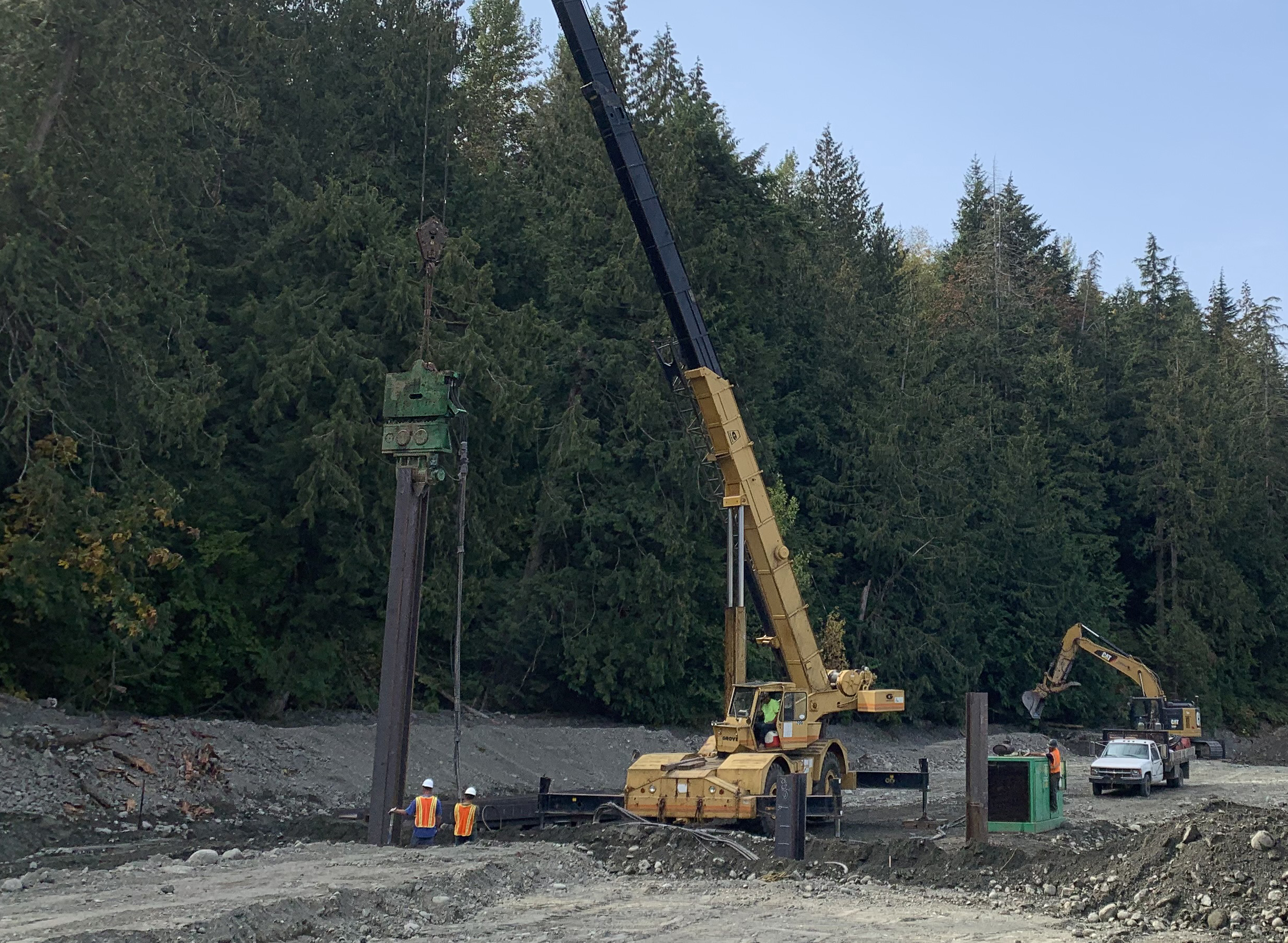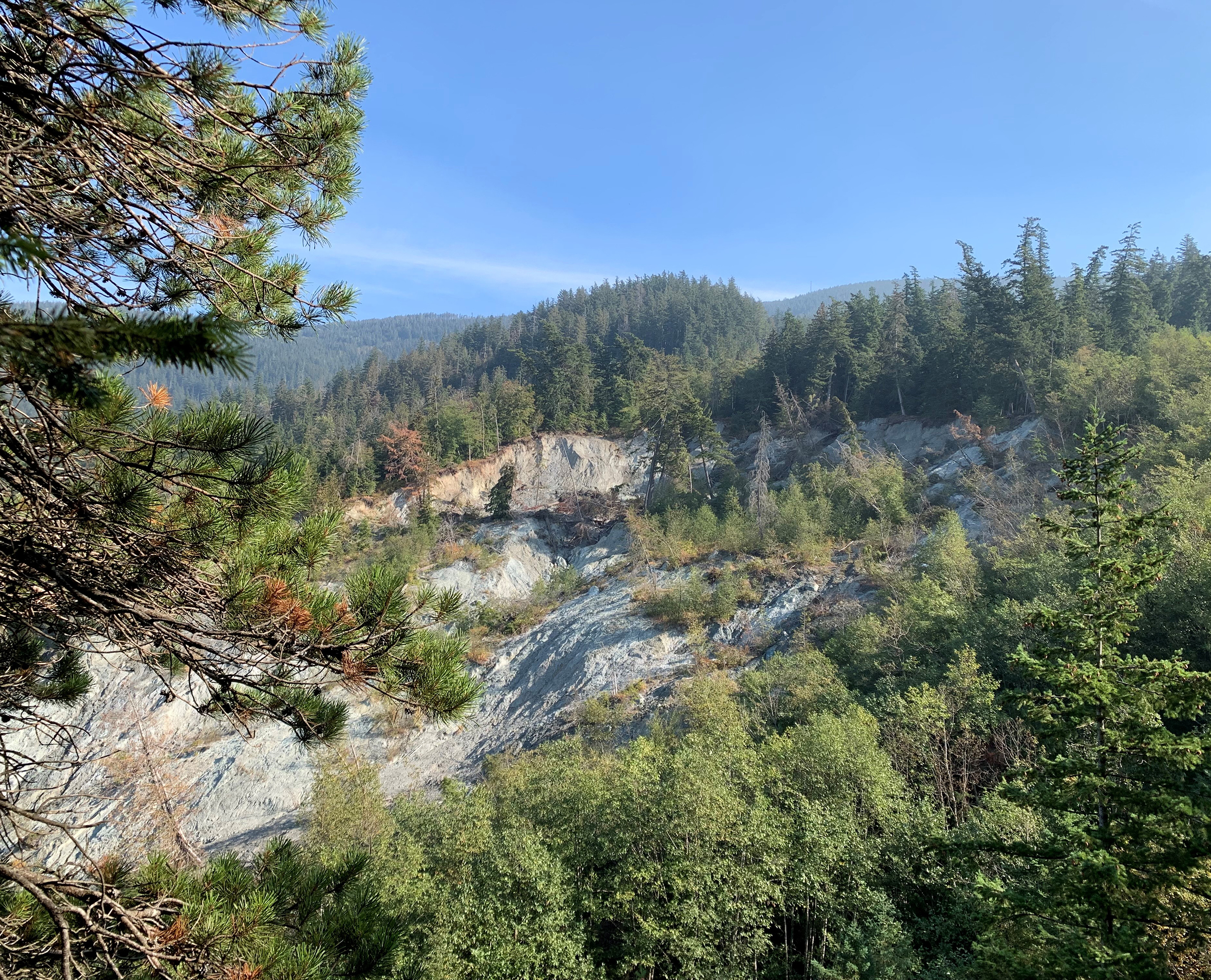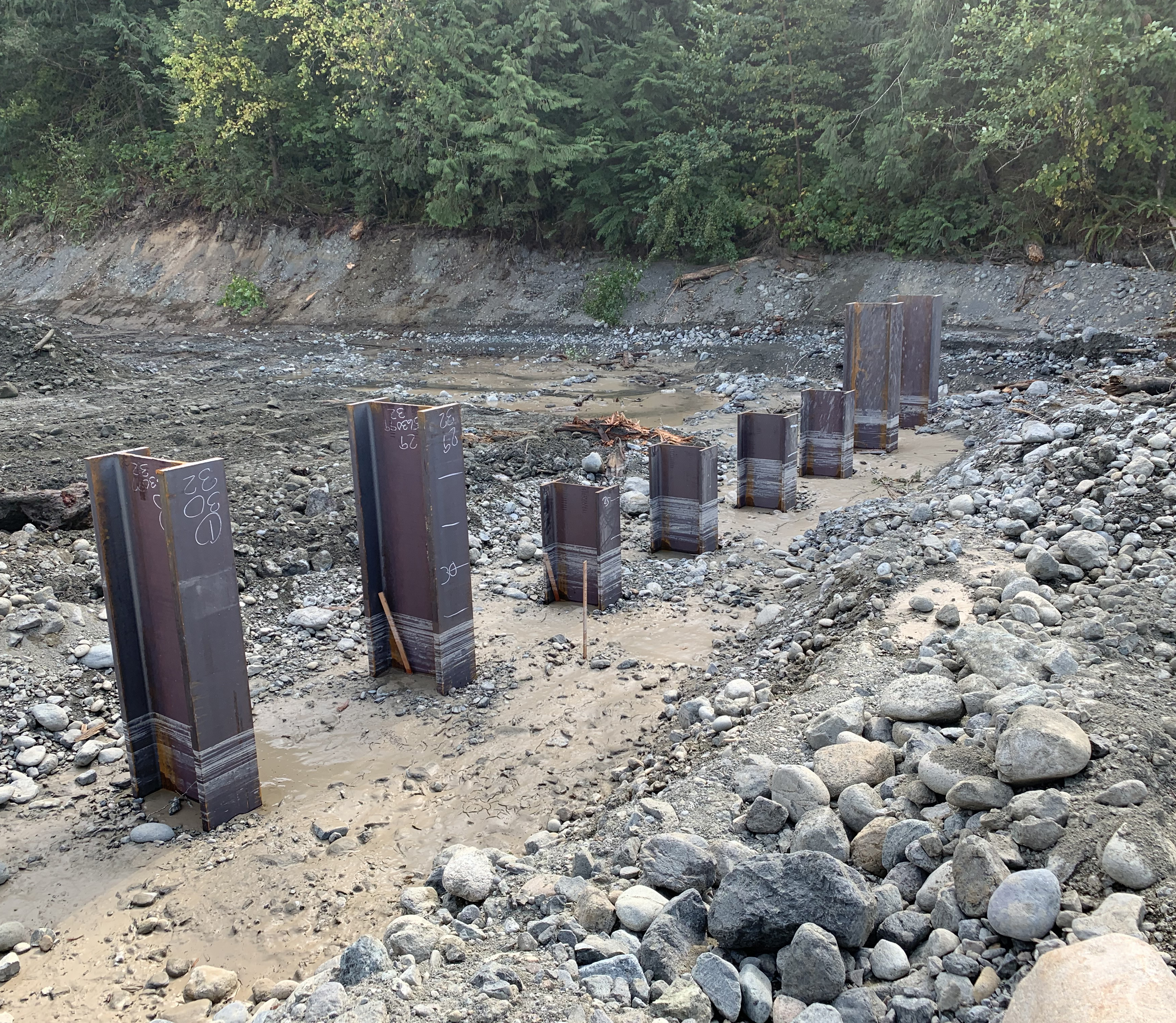
The slide on Sumas Mountain.
Sumas Mountain has a surprise beneath the surface: some of the mountain’s rock contains naturally-occurring asbestos and heavy metals. By itself, that wouldn’t be a problem, but a slow-moving landslide has been delivering a portion of the mountainside to Swift Creek for ages, and the creek distributes that unwanted burden downstream.
We can’t stop the landslide, so partners Whatcom County and Ecology are helping the creek to rid itself of this cargo—and control chronic flooding that affects locals and area farmland at the same time.
Setting traps for sediment
Slower water can’t carry as much sediment as fast water, so Whatcom County is slowing Swift Creek down. They’re constructing sediment traps in the upper reaches of the creek, where the terrain starts to flatten out. Each trap is a combination of a basin and a low wall that slows stream flow so that the larger, heavier sediment material drops out of the water.
Last month Whatcom County Public Works installed the wall portion of the traps, made of steel pilings and wood. They shared a video where you can see that construction in action.
This month, they built phase one of the debris deflection berm, using material excavated from the channel. They also reinforced the walls and the channels where the creek flows into the traps with more earth and rock.
Steel pilings support the structure.
Built to last
The landslide shows no sign of stopping any time soon. If left alone, the upstream traps would eventually fill with coarse sediment. Whatcom County will eventually remove the material from the traps on a regular basis and store it elsewhere in the Swift Creek Management area. The future sediment repositories will conform with existing terrain and be covered and replanted to prevent exposure.
Read more about the full Swift Creek management plan.
More to come
The construction of sediment traps is only one stage of the Swift Creek management plan. To learn more about the plan, see our Swift Creek webpage, and watch for updates on this blog.




